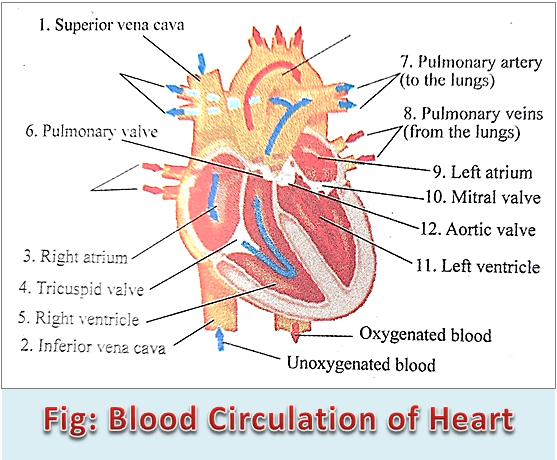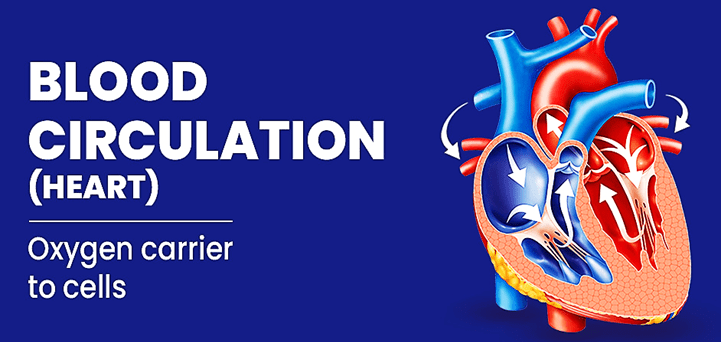Blood Circulation of Heart:
The heart is a large muscular organ in our body that constantly pushes oxygen-rich blood to the brain. It extremities and transports oxygen-poor blood from the brain and extremities to the lungs to gain oxygen. Blood comes into the right atrium from the body, moves into the right ventricle, and is pushed into the pulmonary arteries in the lungs. After picking up oxygen, the blood travels back to the heart through the pulmonary veins into the left atrium, to the left ventricle, and out to the body’s tissues through the aorta.
Explain Blood Circulation of Heart:
The majority of mammals including humans utilize a double circulatory system. This means that we have two loops in our body in which blood circulates. One is oxygenated, meaning oxygen-rich and the other is deoxygenated, which means it has little to no oxygen, but a lot of carbon dioxide. The right ventricle pumps blood to the lungs in the pulmonary circulation. The left pumps blood to the systemic circulation, which includes all regions except the lungs.

All blood enters the right side of the heart through two veins:
- Superior vena cava (SVC)
- Inferior vena cava
The SVC collects blood from the upper half of the body. The IVC collects blood from the lower half of the body. Blood leaves the SVC and the IVC enters the right atrium.
When the RA contracts, the blood goes through the tricuspid valve(TV) and into the right ventricle (RV). When the RV contracts, the blood is pumped through the pulmonary valve into the pulmonary artery and into the lungs where it picks up oxygen.
Blood now returns to the heart from the lungs by way of the pulmonary veins and goes into the left atrium (LA). When the LA contracts, the blood travels through the mitral valve and into the left ventricle (LV). The LV is a very important chamber that pumps blood through the aortic valve into the aorta. The aorta is the main artery of the body.
